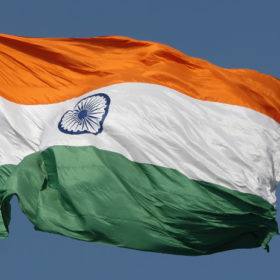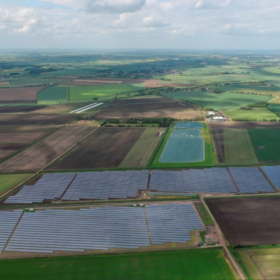India invites 2.5 GW bids for ISTS-connected wind-solar hybrid projects
The projects are to be developed on a build-own-operate basis for an aggregate capacity of 2,500 MW. The eligible bid capacity is 200-500 MW, with a project capacity of at least 50 MW at one project site. The maximum tariff payable to each project developer is fixed at Rs 2.93/kWh for the entire term of 25 years.
India adds 10.4 GW of solar in FY 2017-18, Karnataka leads the way
The Indian solar PV market saw 10.4 GW of new capacity added in the 2017-18 financial year, says Bridge to India, thus bringing cumulative installations to 24.4 GW as of this March. Leading the charge is the state of Karnataka. Concerns over the industry’s development remain, however.
India moots world’s largest solar tender – of 100 GW
If implemented, the huge tendering exercise would dwarf anything that has gone before it. Minister explains bidding will also include solar manufacturing and storage elements.
Intersolar: Indian minister outlines plan to become global renewables leader
Underlining India’s commitment to becoming the global renewable energy leader, Shri Anand Kumar, Secretary of India’s Ministry of New and Renewable Energy, said the country plans 500 GW of capacity by 2030. He also underlined India’s plans for becoming a solar and storage manufacturing hub; and said the International Solar Alliance needs to widen its membership.
Intersolar Europe: Could Chinese setback mean a European comeback?
While tariffs may inhibit India’s ability to benefit from anticipated record low Chinese panel prices, Japan already has a strong pipeline and two of the world’s solar pioneers – Spain and Italy – could be given a shot in the arm by new administrations.
Is India’s 225 GW renewables target achievable?
There was incredulity in some quarters as the federal government raised its renewables ambition another 22%, but the stellar performance of the past four years points to the new target being a realizable one.
India: Waaree opens 1 GW solar module plant, plans to manufacture batteries
Waaree Energies has set up a 1 GW solar PV panel plant in Vapi, which is in addition to its existing 500 MW plant in Surat, Gujarat. The company intends to further increase capacity to 2 GW. Among other key developments, it has partnered with third-party equipment suppliers to manufacture batteries.
India issues EoI for establishment of PV module manufacturing units
India-based Central Electronics Limited (CEL) has invited an expression of interest (EoI) for the establishment of manufacturing facilities for the production of solar cells and crystalline silicon (c-si) modules (conventional/flexible) in India.
Falling battery costs to push solar, wind to 50% electricity generation by 2050, but electricity still failing CO₂ reduction targets – BNEF
Solar PV capacity is set to grow 17-fold, and wind six-fold, by 2050, to account for nearly half of global electricity generation, predicts BNEF, while investments will reach US$11.5 trillion. Cost reductions will drive this charge, particularly in the battery market, which will benefit from the EV manufacturing ramp up. Despite this, the electricity sector is still failing to bring CO₂ emissions down to the required levels, with its continued dependence on gas.
Lightsource BP completes first Indian solar project
Lightsource BP has announced the completion of its first solar project in India. The 60 MWp solar farm is located in Wagdari, Maharashtra.









